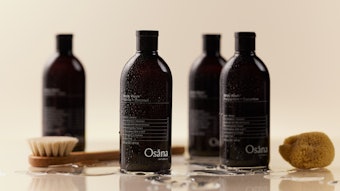Researchers from Evonik and Beiersdorf teamed up to investigate the staining left on clothing by antiperspirants and develop a means to prevent it. Their investigation, which involved consumers from the beginning, resulted in the incorporation of new actives and a new delivery system into a new launch by Beiersdorf's Nivea line.
“We needed to come to understand how deodorant, perspiration, skin oils, and bacteria interact with textiles on the one hand and with laundry detergents on the other,” says Stefan Biel, PhD, from Prototyping at Beiersdorf. It was crucial to this exploration, therefore, to enlist the support of experts from the field of textile care—in this case, the prestigious Hohenstein Institute. The research also involved Evonik's experts in Personal Care (which supplies raw materials to Nivea's deodorant line) and Household Care (with expertise in textile-finishing fields such as fabric softener).
This collaborative research was conducted at one of the biggest skin-research centers in Germany—at Beiersdorf in Hamburg. The scientists devised a special method to simulate the conditions which result in discoloration. “White armpit residue is caused mainly by the active ingredients in antiperspirants: aluminum salts,” Biel explains. A solution was quickly found to protect black fabrics from staining. “We use a special technology by which the aluminum salts are dissolved in an emulsion and then coated in oils that make any residue invisible.”
The problem of yellowing is a more complicated one. This discoloration is the result of a chemical reaction. “A reaction occurs in the washing machine when perspiration and the active agents in deodorant come into contact with the surfactants contained in laundry detergents,” says Susann Wiechers, PhD, a chemical scientist at Evonik. “And interaction with lipids, or body fat, then produces yellow deposits that cling to the fibers.”
Testing performed on test subjects quickly showed that anyone using antiperspirants will eventually wind up with these unsightly stains on their clothing. How quickly such staining occurs and how pronounced it is varies from one person to the next, depending on the individual makeup of a person’s perspiration, on how strongly they perspire, and on how oily their skin is.
Textile research has found that cotton fibers are especially apt to attract and retain foreign substances. After every wash, the fabric will show more discoloration and become increasingly stiffer. “This persistent discoloring cannot be removed through washing,” says Jan Beringer, PhD, from the Hohenstein Institute. “The fabric will eventually look really unsightly.”
The researchers proceeded on the idea of finding an ingredient that would properly protect fabric and then integrating that ingredient into the formula for Nivea deodorants. “We came up with a veritable bouquet of possible ingredients and structures,” explains Evonik’s Susann Wiechers, PhD. “Our meticulous search paid off when we identified a particular compound as producing exactly the effect we were aiming for. This active ingredient acts as a protective coating for the textile, thus preventing any staining effects from getting through to the fabric in the first place.”
The researchers were also able to integrate this new agent, together with the other technology that prevents white residue on fabric, into stable, skin-friendly deodorant formulations for sticks, sprays, and roll-ons. The resulting product is Nivea Invisible for Black & White deodorant.










